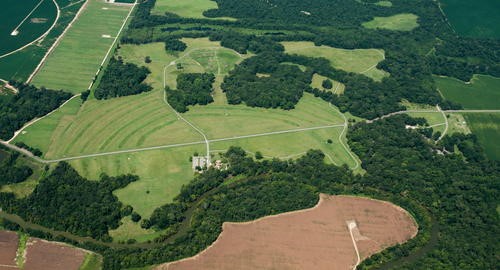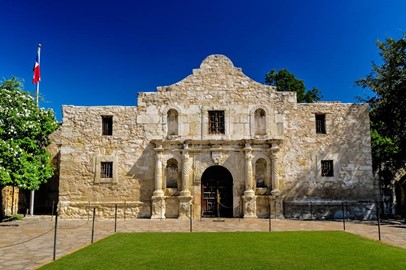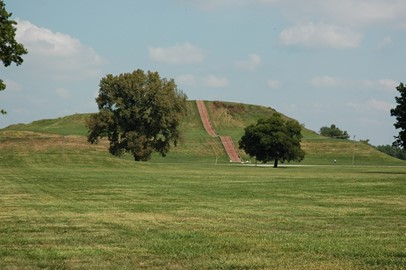region :: europe and north america
Poverty Point
The Monumental Earthworks of Poverty Point, a UNESCO World Heritage Site in the USA, is a prehistoric complex built by a hunter-fisher-gatherer society between 1700 and 1100 B.C.E. It features five mounds, six concentric semi-elliptical ridges, and a central plaza, representing a remarkable feat of earthen construction unmatched in North America for over 2,000 years. This site, created without modern tools or agriculture, highlights the sophistication of its builders and their extensive trade network across... Read More
San Antonio Missions
The San Antonio Missions, a UNESCO World Heritage site in the United States, comprise a group of five colonial-era missions established by Spanish Catholic missionaries in the 18th century. These missions, including the famous Alamo, were built to spread Christianity and Spanish culture among the indigenous populations, featuring distinctive stone churches, living quarters, and agricultural systems. Today, they stand as well-preserved historical landmarks, offering insight into the region’s colonial past an... Read More
Monticello
Monticello and the University of Virginia, a UNESCO World Heritage site in the United States, represent exceptional examples of neoclassical architecture designed by Thomas Jefferson, the third U.S. President. Monticello, Jefferson’s self-designed home, showcases his innovative ideas with features like the octagonal dome and sustainable estate planning. The University of Virginia, founded by Jefferson in 1819, integrates a unique “academical village” layout, blending student living and learning spaces with ... Read More
Cahokia Mounds
Cahokia Mounds, a UNESCO World Heritage Site in the United States, is a remarkable pre-Columbian Native American city that flourished between 1050 and 1350 CE. At its peak, it was one of the largest urban centers north of Mexico, featuring over 120 earthen mounds, including the impressive Monks Mound, the largest prehistoric earthwork in the Americas. The site served as a hub for trade, religion, and culture, with evidence of a sophisticated society that included planned settlements, agricultural innovation... Read More
La Fortaleza and San Juan
La Fortaleza and San Juan, a UNESCO World Heritage site in the Puerto Rico, is a historic fortified complex and colonial city renowned for its well-preserved Spanish architecture and military engineering. Established in the 16th century, it includes La Fortaleza, the governor’s residence, and formidable structures like Castillo San Felipe del Morro, reflecting its strategic role in the Caribbean. The site showcases over 500 years of history, blending cultural influences and offering a glimpse into colonial ... Read More
Dresden Elbe Valley
The Dresden Elbe Valley, a UNESCO World Heritage site in Germany, is renowned for its stunning cultural landscape, blending natural beauty with architectural splendor. This picturesque valley features historic landmarks like the Dresden Castle, Zwinger Palace, and Semper Opera House, set against the serene Elbe River and lush vineyards. Recognized for its universal value, it showcases centuries of artistic and urban development, making it a significant testament to European heritage.
Liverpool – Maritime Mercantile City
Liverpool – Maritime Mercantile City, a UNESCO World Heritage site in the UK, is renowned for its historic waterfront, showcasing a rich legacy of trade and cultural exchange. Its iconic docks, warehouses, and merchant buildings reflect its pivotal role as a global port during the 18th and 19th centuries. The site includes notable landmarks like the Royal Liver Building and the Albert Dock, blending architectural grandeur with historical significance. This designation highlights its contribution to maritime... Read More






